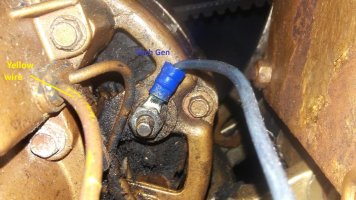FWIW, I ran into a lot of off grid cruiser info that had me thinking upside down on what i should be aiming at. Turns out, as usual, I needed to think about what I want out of the system first, then the methods and budget to get there will mostly have designed themselves.
Since you have a battery bank, I think the first thing is to make sure they're wired for balanced charging, either by connecting at a mid point or using busses (which I think might be impractical on a sailboat). See Victron's docs on how to wire for balanced charging. You'll throw away years of battery life if they aren't charging evenly.
Also, think about how cheap LFP batteries are now, how significantly better value they are over time over FLA/AGM, and how old your current batteries are. If you're going to be replacing w/in a couple years, make choices now that will be money spent towards your future design, rather than wasted propping up the old one. That we can get good quality 230Ah LFP batteries these days for $500 makes for a completely different design universe than even 5 years ago. If there's solar involved (and why not, unless you're always in a marina or are a very spartan sailor), that'll also go in the equation.
And, as Nigel Calder says, what you spend on electrical you'll never recover when you sell, so do it for what you want out of it.
Anyway, your electrical demands are going to dictate the charging system you need. The math is pretty straightforward: the capacity you want on hand and the recovery (charge) rate you need to sustain or replenish it are going to tell you which components you have to get. You'll have all the usual choices between good/cheap/easy/challenging/etc but the 'best' choice for you is going to be a lot narrower than you might think, once you've decided what you want out of it.
Your 440Ah AGM bank is really only a healthy half that (they don't like to get discharged much more than that on a regular basis), and keeping them at full charge, or topping them up all the way every day you run them down, is going to tell you how much charging you have to have. If you rarely use it at all, and the 440Ah is for just in case, and if you do ever run them down you'll be able to take the time to make sure they get topped back off by running the engine immediately after, then slow charging is fine. Or always tying up where there's shore power. OTOH, if you go out regularly, burn up all your capacity, then leave your boat on a mooring ball with limited or no solar to get them topped back up, then you're wasting money on battery life. Another important thing to do is look up your battery's charge rate. Most AGM's have about the same charge rate but not all, so best to be sure. That then will tell you what you have to have and shouldn't exceed.
You may have heard, batteries don't die, they get murdered.
Edit:
AGM usually charge between 10% and 30% of capacity, so usually a 100Ah needs minimum 10A to max 30A charger.
Also, I happen to be in the middle of learning all this stuff myself so please do not think I'm any kind of expert, I'm just an idiot with a lot of current notes to refer to.




